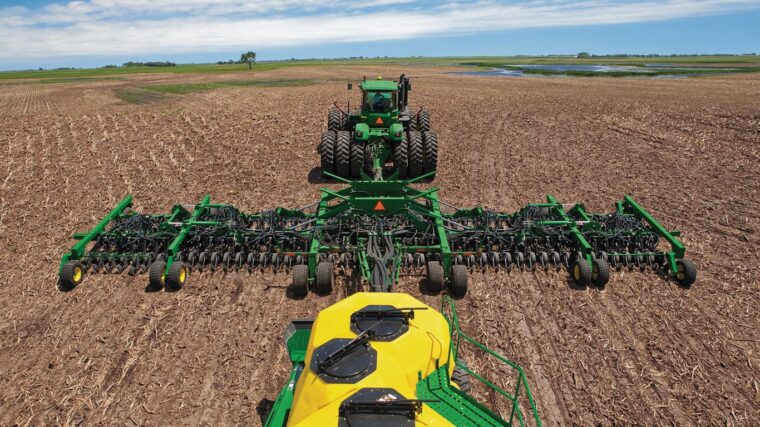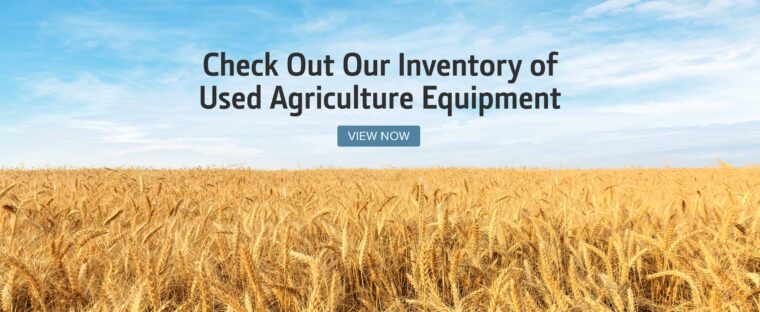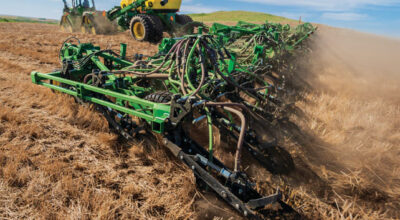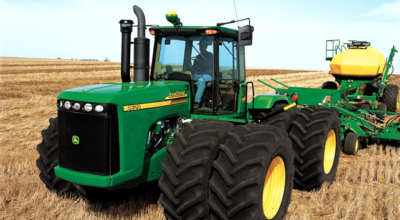When you’re on the hunt for an air seeder that will take care of all of your seeding needs, you know you can turn to John Deere for the right piece of equipment. But what does an air seeder do? How is it different from your standard everyday planter? The fact of the matter is that there are many key differences, and air seeders from John Deere have several special features that make them reliable, efficient machines to have on the farm.

What is an Air Seeder?
An air seeder is a machine that helps agricultural producers who are looking to make seeding quicker and more efficient. This heavy-duty machine was created in order to eliminate the need to till the soil before seeding. It is known to be able to handle the toughest of terrain.
What Equipment Makes Up a John Deere Air Seeder System?
A John Deere air seeder can refer to a single integrated machine or a multi-piece system made up of separate components working together. Both configurations are designed to deliver seed and fertilizer into the soil with precision and efficiency.
Integrated Tank Air Drills
Integrated models, like the N500C Series, combine the seed tank and drill into a single machine. This all-in-one design simplifies transport, setup, and operation, which makes it ideal for farmers who want the benefits of air seeding in a more compact and convenient package. Models include the N530C, N536C, N540C, and N542C.
Air Carts
If you don’t have an integrated machine, air carts are the heart of the multi-piece system when it comes to product storage and distribution. These high-capacity units hold seed and fertilizer, using airflow to deliver them through hoses to the seeding tool. Air carts come in a variety of models, both leading and pulling, with some of the most basic being the C350T and C350L.
Air Drills
Air drills are another aspect of a multi-piece seeding system. They include ground-engaging tools that receive seed and fertilizer from the air cart and place them into the soil at the right depth and spacing. John Deere air drills, like the popular N540, N550, and N560, are available with various row configurations and opener styles to match different crops, tillage practices, and field conditions.
What’s the Difference Between an Air Seeder and a Planter?
An air seeder will volumetrically meter the product right below each tank, whereas a planter will singulate each seed right above the row. Depending on your needs, you may turn to an air seeder over a planter for your work out in the field.
How Do Air Seeders Work?
An air seeder works with fans that blow air into its primary tubes and as the air is blowing, the meter is turning. Each seed is dropped into the airflow, then it’s taken down to the tool. The primary hoses take the seed and fertilizer all the way to the tower. From there, the seed and fertilizer are distributed into the secondary hoses at the towers. Afterward, they are taken into the openers, which put the seed into the ground.
The opener blade opens the trench so that the seed can be placed at the bottom. The gauge wheel defines the depth at which the seed is being placed. The seed is blown into the seed boot, and the pressing wheel pushes that particular seed into the soil to ensure full contact.
What are the Benefits of a John Deere Air Seeder?
Air seeders provide several benefits for farmers looking to improve the yield and efficiency of their seeding operations. A few benefits of an air seeder include:
- Ability to handle bulk quantities of seeds
- Capable of plating across large acreages efficiency
- Easy for farmers to use and operate
- Requires low maintenance and upkeep
- Durable, long lasting design
- Increase farm efficiency
- Reduced manual labor
What are the Features of John Deere Air Seeders?
John Deere air seeders come equipped with a wide range of features. While many of these features are standard on newer integrated models, some may be optional or available as upgrades depending on the configuration. These features may include:
- Accurate Tank-Based Metering: Integrated air seeders meter seed and fertilizer directly at the central tank, ensuring consistent delivery and reliable application rates.
- Gentle Air Delivery System: Deere’s advanced airflow design gently moves seed from the tank to the openers, reducing bounce and promoting uniform seed placement.
- SeedStar™ Monitoring Systems: Most integrated models include SeedStar™, providing operators with real-time in-cab monitoring, flow tracking, and blockage alerts.
- SectionCommand™ Technology (Optional on some models): This feature allows the air seeder to automatically shut off specific sections during overlaps, minimizing waste, increasing efficiency, and improving planting precision.
- ActiveCal™ On-the-Go Calibration (Available on select configurations): Enables operators to calibrate seeding rates without leaving the cab, saving time and helping ensure accurate application.
- RelativeFlow™ Blockage Sensors (Optional feature): Detects and alerts users of blockages in individual seed runs, helping to prevent skips and uneven planting.
Tips for Buying a Used Air Seeder
If you’re in the market for a used John Deere air seeder, there are a few important things to consider to ensure you’re getting quality equipment that has been maintained properly. Here are a few tips to think about when looking for your next used air seeder.
Review the Exterior
The first step to buying a used air seeder is to be sure it visually is in good condition. This means checking for any visible damage, checking beyond minor dings and paint chippings, looking for cracked or missing pieces, big dents, or even leaks within the hoses of the equipment.
Check the Specs
There are many different types and manufacturers of air seeders, so it’s important to be sure the used air seeder has the specifications that fit your needs. Checking the specs of a John Deere seeder includes measuring the width, identifying if it’s the right amount of hydraulic output, checking the current mileage, etc.
Inspect the Air Tank
Air tanks should be rust free and free from any hydraulic leaks. Identify how many compartments and bushels the used air seeder can hold, and if their model can use a saddle tank to increase the holding capacity. If able to, check the air flow by disconnecting the hose from the openings and face it upwards. A good air flow should send seeds at least 12” upwards.
Examine the Seed Openers
Openers help put seeds into the soil, so it’s crucial for the seeder to have well operating openers. Even more so, it’s important that they are the right size. Examine that the spacing and size of the openers are right for the kinds of seeds you’ll be planting, otherwise, your John Deere air seeder will be inoperable for your farming needs.
Inspect the Electronics
The electronics on an air seeder include the controllers, scales, and screens. Be sure that all features of these electronics are working properly without any glitches. If you can, check to see if the wires have been chewed up or worn down by small animals. Failure to inspect the electronics of your used air seeder can lead to expensive repairs in the future.
Check the Undercarriage
John Deere air seeders are equipped with wheels to help them maneuver. Check to be sure the tires have quality tread and that they are in good condition, and that the rims are fully intact with no cracks or damage.
Background Check
Before buying a used air seeder, be sure to verify the serial number and ask for the documents and maintenance records to ensure the equipment is legitimate. If there seems to be a part that has required replacement or extensive care, it may be a sign that there is a recurring problem with the used air seeder.
If you have any questions about air seeders from John Deere, you can contact your local John Deere dealer.
If you enjoyed this post or want to read others, feel free to connect with us on Facebook, Pinterest, Twitter, or Instagram!


